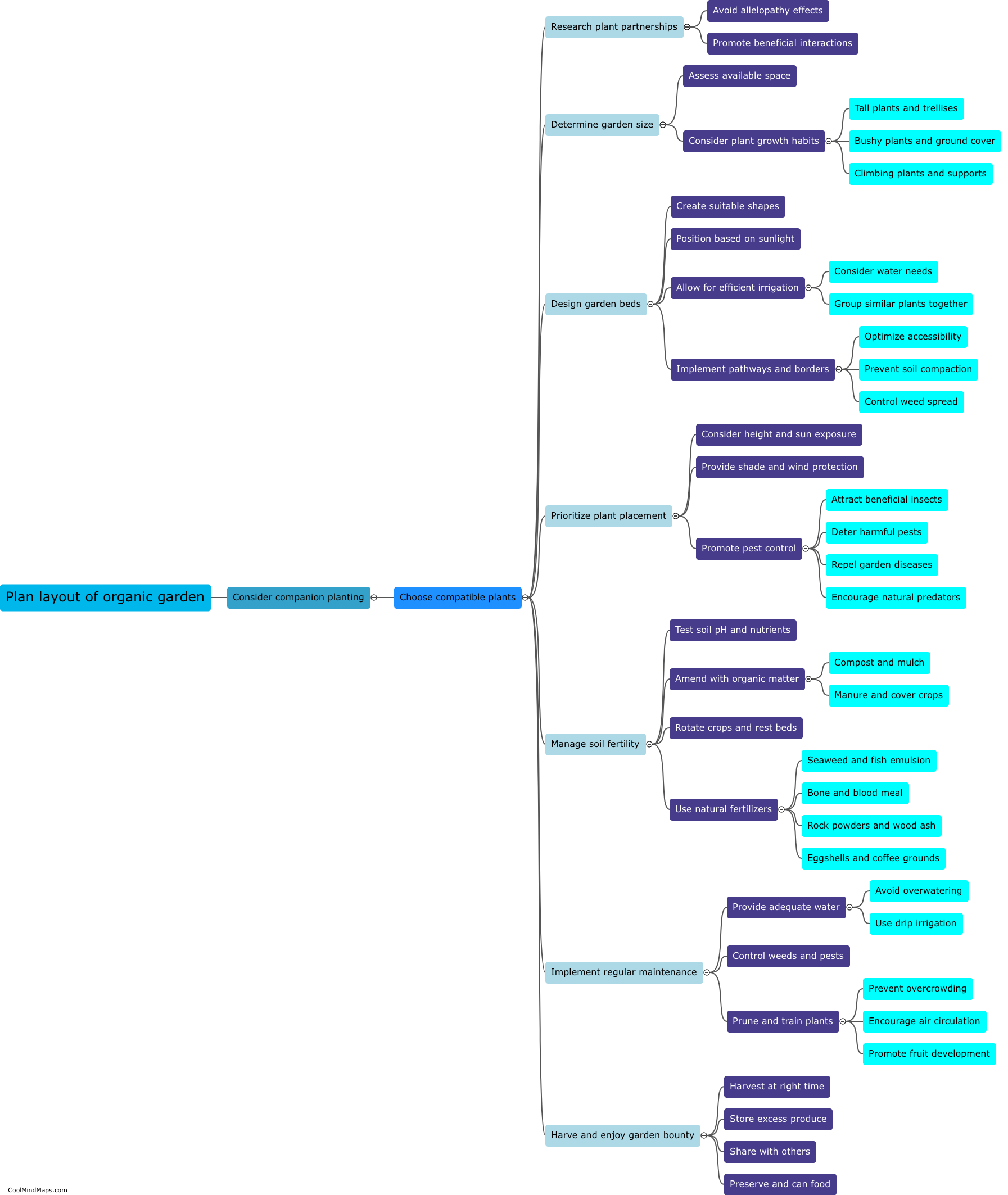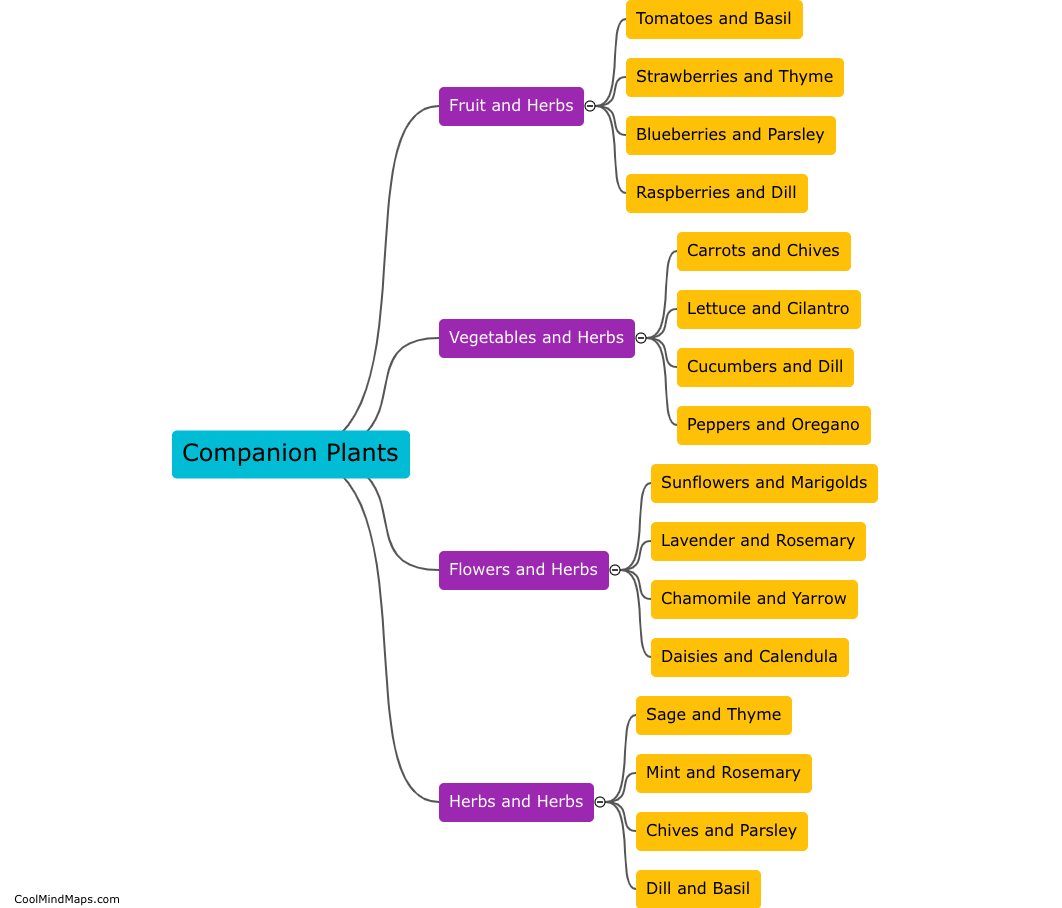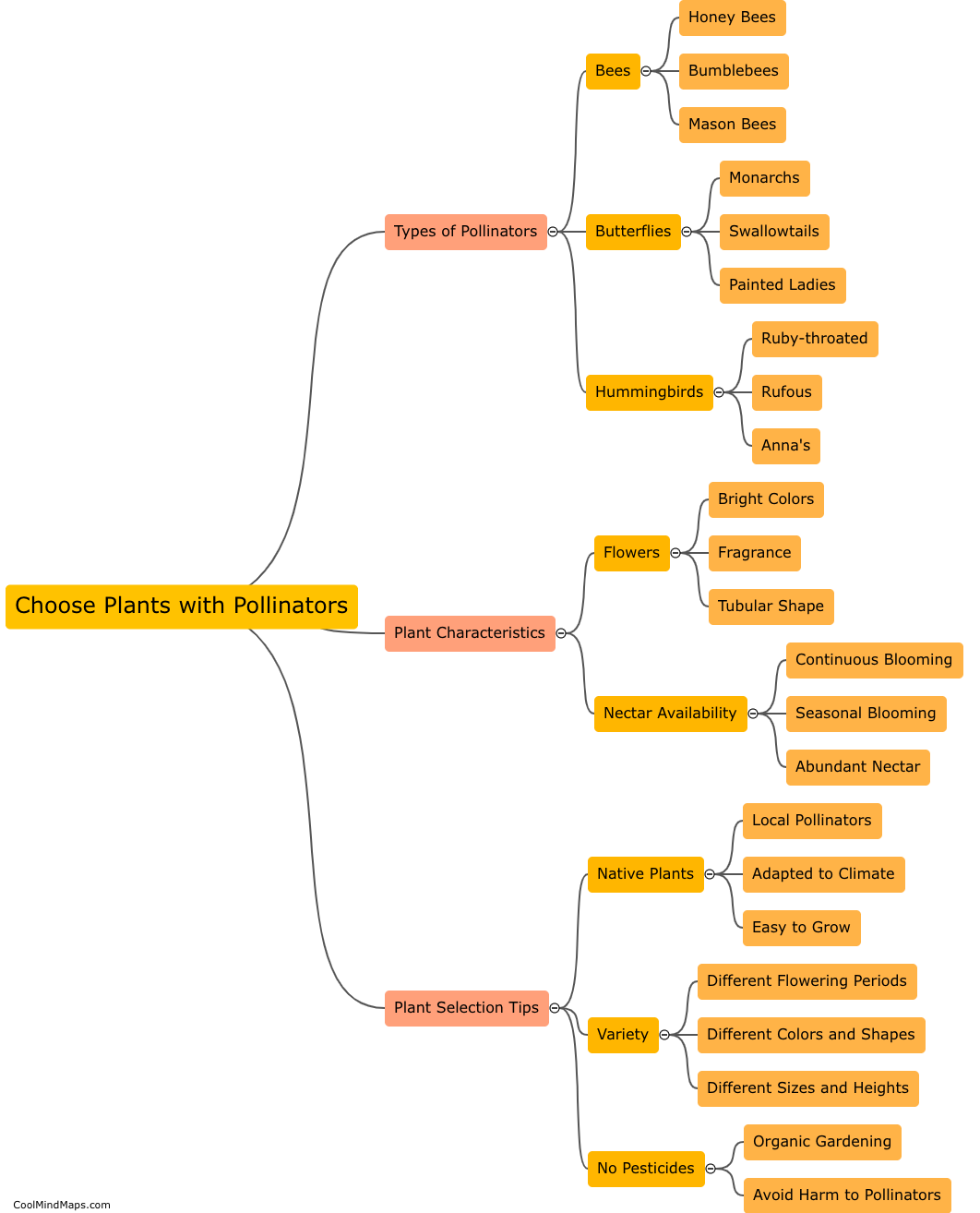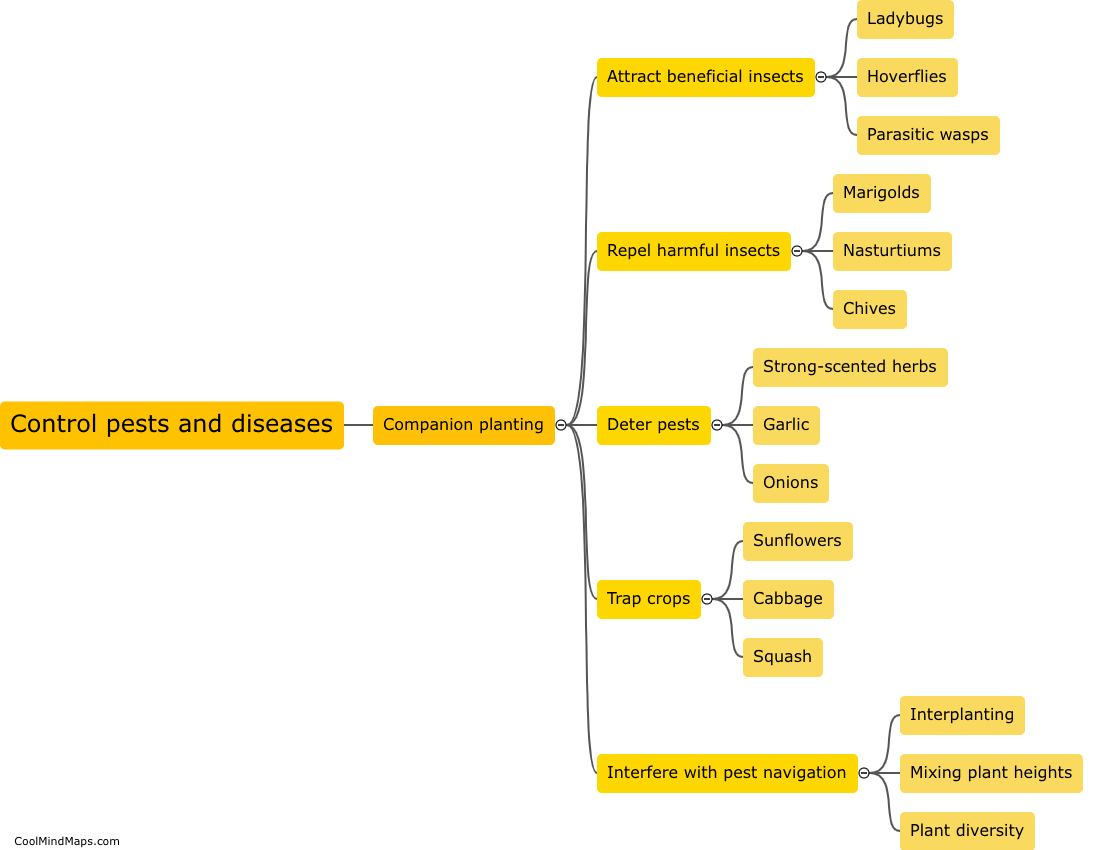How do you plan the layout of an organic garden with companion planting?
When planning the layout of an organic garden with companion planting, there are several factors to consider. First, it is important to research and understand which plants have beneficial relationships with each other. Companion plants can help deter pests, attract beneficial insects, provide shade or support, and improve soil quality. Once you have identified suitable companion plants, you should consider their height, growth patterns, and spacing requirements. Arrange taller plants towards the north of the garden to avoid shading smaller ones. Additionally, group plants with similar water and sun requirements together to ensure optimal growth. It is also important to rotate crops each season to prevent the buildup of pests and diseases. By carefully planning the layout and companionships of plants in an organic garden, you can create a harmonious and productive ecosystem.

This mind map was published on 24 January 2024 and has been viewed 81 times.











